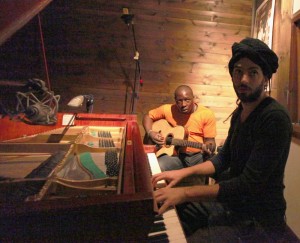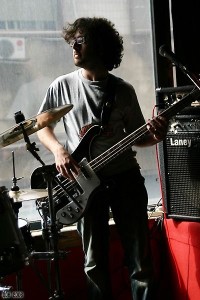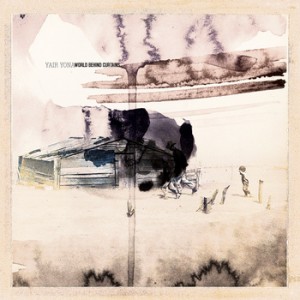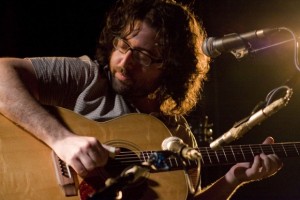Israeli musician Idan Raichel shares the incredible story of jamming with Malian guitar virtuoso Vieux Farka Touré and uncovering a diamond.

Two years ago Vieux Farka Touré and Idan Raichel met in a rehearsal room in a south Tel Aviv recording studio simply to jam. Deciding it would make good archive material, they recorded the spontaneous three-hour session.
“There was something about this session that just brought out our love of music,” Raichel said during a recent phone interview.
A week later Jacob Edgar from Cumbancha Records contacted Raichel with the idea of turning the session recording into an album. Raichel initially hesitated at the thought of cutting down the 15- to 20-minute improvised melodies into album tracks. But after spending a few months listening to the recording, he realized it resembled an unpolished “diamond” and took on the task of producing the album.
Raichel’s work paid off in the form of 11 shining tracks. Under the name the Touré-Raichel Collective, The Tel Aviv Session was released on Cumbancha last week. The four musicians from the original session—Touré (guitar), Raichel (piano), Souleymane Kane (calabash), and Yossi Fine (bass)—form the core of this acoustic album. A select group of guest artists, including harmonica player Frédéric Yonnet and singer Cabra Casay, also lent their talent to the album.
“Vieux Farka Touré and I are very song- and production-oriented, so it was a very different experience for us,” Raichel said. “[But] The Tel Aviv Session album ended up as one of the most exciting works that I have ever done as a musician.”
 During production, Raichel kept the album focused on the original 2010 session, especially the unrehearsed musical exchange between the artists and the overall atmosphere of the studio. Like on a jazz recording, the musicians take turns leading, and when they all play together they create shimmering cyclones of sound. An occasional breath or sigh even comes through on the recording. Listening, it is easy to imagine the excitement and connection between the musicians during the session.
During production, Raichel kept the album focused on the original 2010 session, especially the unrehearsed musical exchange between the artists and the overall atmosphere of the studio. Like on a jazz recording, the musicians take turns leading, and when they all play together they create shimmering cyclones of sound. An occasional breath or sigh even comes through on the recording. Listening, it is easy to imagine the excitement and connection between the musicians during the session.
“[With the album,] I tried to emphasize the best part of each musician,” Raichel said. “But the most important thing was still the communication between the four of us.”
There is a feeling of freedom and experimentation on the album, and even of heightened virtuosic ability. On the track “Bamba,” for example, Raichel plays glissandos and plucks the strings of the studio’s grand piano to create the sound of a West African kora. Touré’s dazzling finger work and tone especially come through on tracks like “Hawa” and “Ai Houde Bakoi.”
The guest musicians also add energy and texture to the album. Yonnet’s high-power harmonica playing on “Touré,” for example, shakes up the middle of the album, escalating the rhythm to a foot-stomping pace. And Mark Eliyahu’s haunting kamanche weaves in and out of the melody on “Alem,” until it fades away with Touré’s guitar and closes the album.

The Touré-Raichel Collective begins a two-week tour of the United States and Canada on Apr. 13. Tapping into the spirit of the 2010 session, they will improvise around the album’s tracks.
“What we will try to do onstage is not to play the album, but to play the idea of the album,” Raichel said.
The concerts, like the album, provide a unique opportunity to experience Touré and Raichel—two of the most talented musicians of their generation—come together in such a personal and open style of performing. And it creates an uncommon experience for the musicians too, like discovering a diamond.
“Special moments like the Tel Aviv session are very rare,” Raichel said. “And we are very lucky to have them.”
Join the tour on Twitter for backstage photos and insights from the road.






